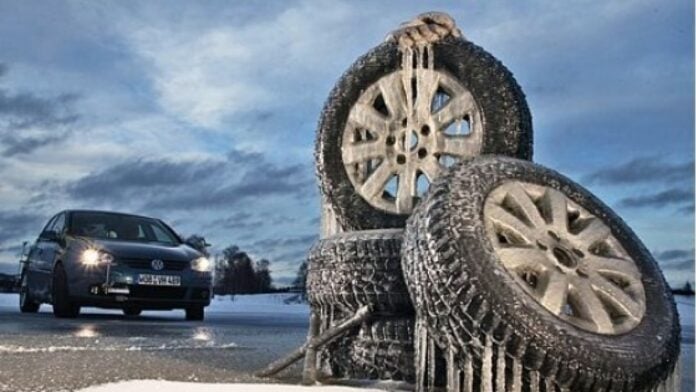The chill of winter is inevitable, and preparation is key to navigating the harsh conditions that come with it. As temperatures drop and snow begins to blanket the landscape, the importance of having the right equipment becomes paramount. A staggering number of accidents occur during winter months, often attributed to inadequate gear and poor vehicle preparedness. With the right equipment, drivers can significantly reduce their risk of encountering dangerous situations on the road. How can one ensure that they are ready for the upcoming winter season?
Equipping a vehicle for winter is not merely a precaution; it is a necessity. Many drivers underestimate the challenges posed by icy roads and severe weather. According to recent statistics, nearly 25% of all vehicle accidents in the United States occur during winter months, highlighting the urgent need for proper winter gear. This includes everything from suitable tires to reliable heating systems. As winter approaches, understanding the essentials of winter preparedness can mean the difference between a safe journey and a hazardous experience. What are the critical components that every driver should consider as winter approaches?
The Importance of Winter Tires
Winter tires are specifically designed to provide better traction, handling, and performance in cold weather conditions. Unlike all-season tires, winter tires feature a unique tread pattern and softer rubber compounds that remain flexible in low temperatures. This flexibility allows for improved grip on icy and snowy surfaces, which is crucial for maintaining control of a vehicle. In fact, studies have shown that vehicles equipped with winter tires can stop up to 30% shorter on icy roads compared to those with standard tires.
Moreover, winter tires are not just beneficial for snow-covered roads; they also perform well in cold, dry conditions. As temperatures drop below 45°F (7°C), the rubber in all-season tires begins to harden, leading to decreased performance and safety. By contrast, winter tires maintain their grip, ensuring that drivers can navigate challenging conditions effectively. Investing in a quality set of winter tires can dramatically enhance safety during the winter months, making them an essential component of winter vehicle preparation.
From an economic perspective, the initial cost of winter tires may be offset by the potential savings from accident avoidance and increased vehicle longevity. Insurance companies often offer discounts for drivers who equip their vehicles with winter tires, recognizing the reduced risk associated with their use. Therefore, choosing to invest in winter tires not only enhances safety but can also lead to financial benefits in the long run.
Essential Winter Accessories
In addition to winter tires, several accessories can enhance a vehicle’s winter readiness. Items such as windshield wipers designed for snow and ice, snow brushes, and ice scrapers are crucial for maintaining visibility during winter storms. Moreover, having a reliable battery is essential, as cold weather can significantly reduce battery performance. Drivers should ensure their battery is in good condition and consider replacing it if it shows signs of weakness.
Another vital accessory is a winter emergency kit, which should include items such as blankets, non-perishable food, water, a flashlight, and a first-aid kit. This kit can prove invaluable in the event of being stranded or stuck in severe weather. Additionally, having tire chains can provide extra traction in particularly icy conditions, further enhancing safety.
As winter approaches, it is wise to conduct a thorough inspection of all vehicle accessories. Ensuring that each component is functioning correctly can prevent dangerous situations on the road. By preparing adequately with the right accessories, drivers can navigate winter weather with confidence and assurance.
Understanding Vehicle Maintenance for Winter
Proper vehicle maintenance is another crucial aspect of winter readiness. Regular checks of essential systems, such as brakes, lights, and heating, can ensure that a vehicle operates safely during the colder months. Brakes should be inspected for wear, as stopping distances can increase on slippery surfaces, making effective braking even more critical. Additionally, ensuring that all lights are functioning properly is essential for visibility during shorter daylight hours and inclement weather.
The vehicle’s heating system should also be evaluated to ensure it can provide adequate warmth during frigid temperatures. A malfunctioning heating system can lead to discomfort and reduced visibility if windows fog up. Furthermore, checking fluid levels, such as antifreeze and windshield washer fluid, is vital, as these can freeze in low temperatures, leading to potential engine issues or visibility problems.
Taking the time to perform a comprehensive maintenance check can prevent many winter-related vehicle issues. By prioritizing vehicle upkeep, drivers can enhance their safety and reliability, ensuring that their vehicle is ready to tackle whatever winter throws their way.
Final Thoughts on Winter Preparedness
As winter approaches, the necessity of being adequately prepared cannot be overstated. From investing in winter tires to ensuring that all vehicle systems are functioning optimally, each step taken toward winter readiness significantly enhances safety on the roads. The statistics surrounding winter accidents serve as a stark reminder of the potential dangers that lie ahead. However, with the right equipment and maintenance, drivers can navigate winter with confidence and peace of mind.
Ultimately, the key to successful winter driving lies in proactive preparation. By understanding the importance of winter tires, essential accessories, and vehicle maintenance, drivers can effectively mitigate risks associated with winter travel. As the cold season looms, taking these steps can lead to safer journeys and a more enjoyable winter experience.


